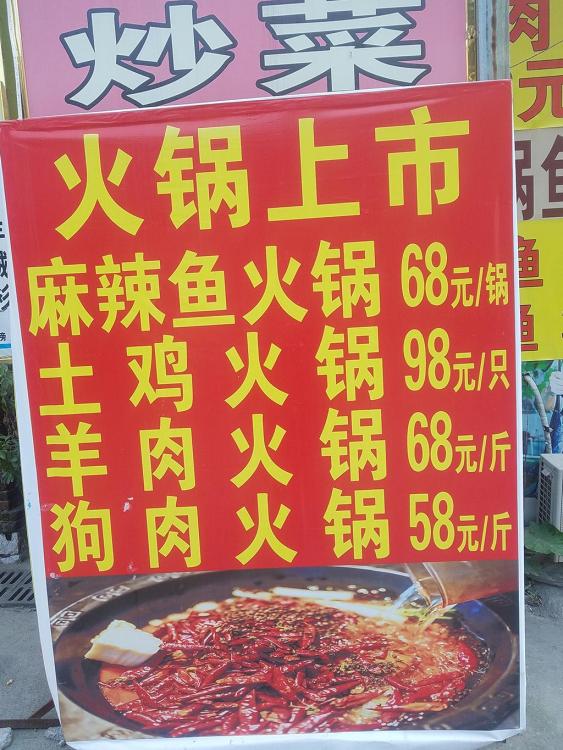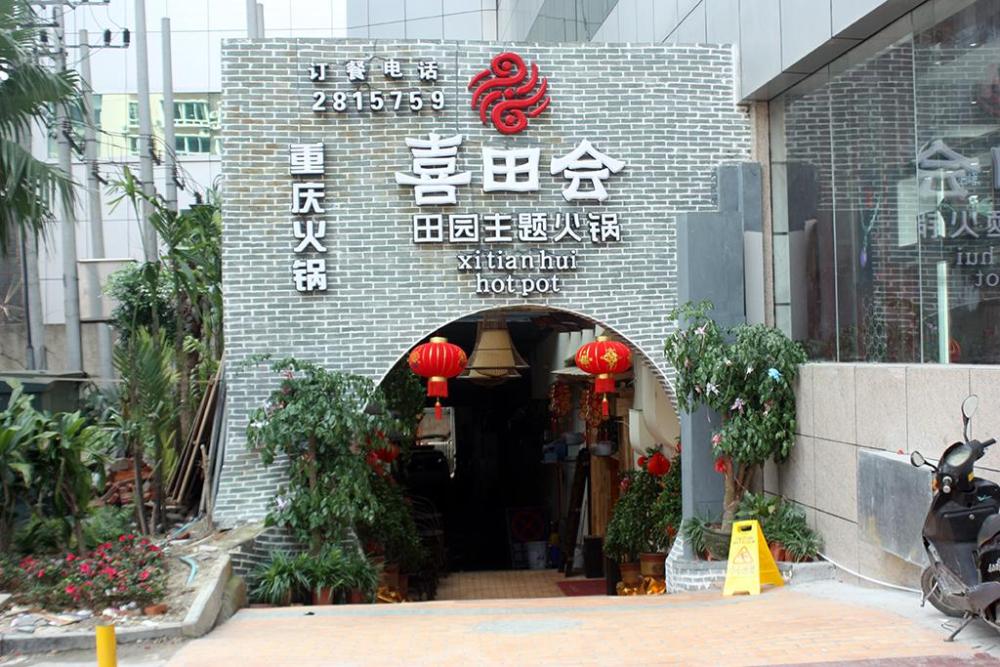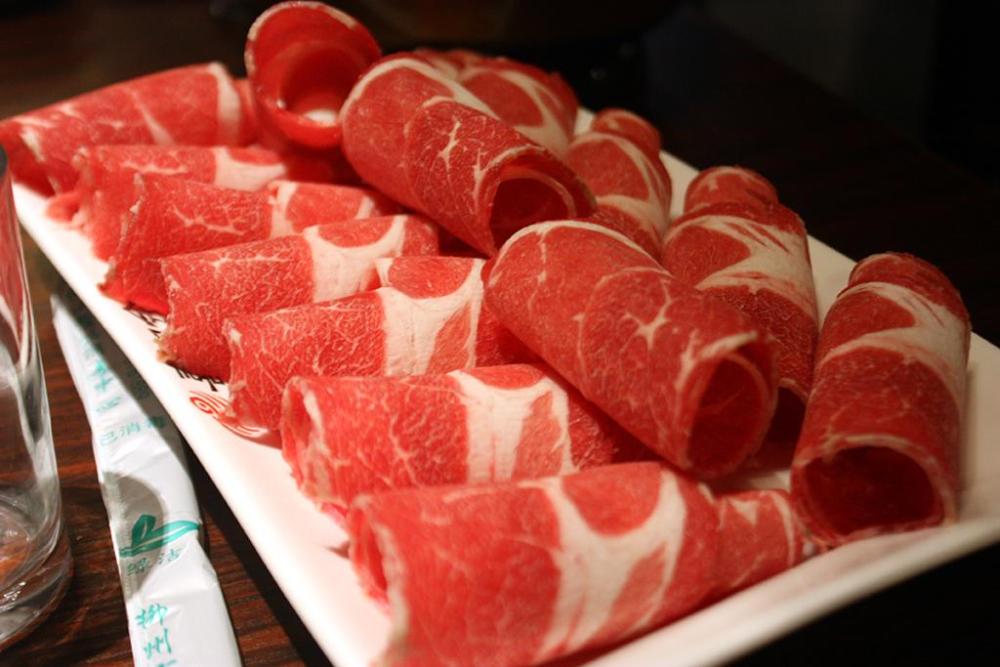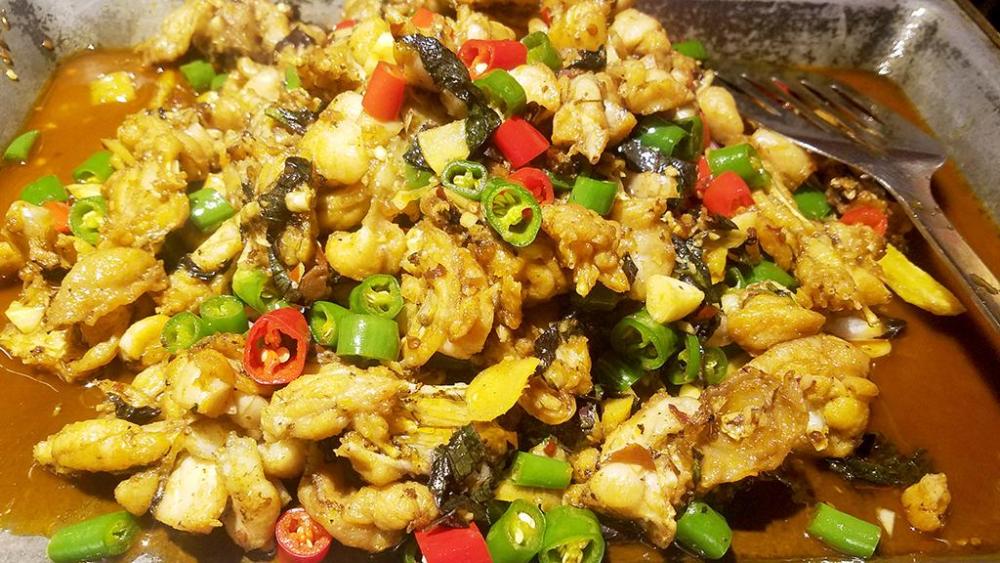45. 火锅 (huǒ guō)
Hotpot Advertisement - Mala Fish Hotpot, Organic Chicken Hotpot, Lamb Hotpot, Dog Hotpot.
Eating out in China is nearly always a communal event and by far the most popular way to do so is by getting stuck into some 火锅 (huǒ guō), literally ‘fire pot’, but known in English, of course, as hot pot or hotpot. This is especially so as we get into autumnal weather and winter.
Of course, hot pots are not confined to Guangxi; they are popular all over China. The two most famous are Mongolian and Sichuan/Chongqing* hotpots and these are both available here with the latter being the more popular. However, both in restaurants and in the home, the locals like to include many of the foodstuffs I have already mentioned here, as the part of the meal.
Liuzhou Hotpot Restaurant
For anyone who doesn’t know how Chinese hot pots work, a quick summary. A pot of boiling broth is placed in the centre of the table (nearly always circular) and various food items are cooked by the diners therein. The list of possible ingredients is virtually limitless. Sichuan style hotpot often uses a 鸳鸯锅 (yuān yang guō), a two compartment pot and utilises a ‘red’ and a ‘white’ broth side by side. The ‘red’ is fiery hot from chillies and Sichuan peppercorn whereas the ’white’ is more or less chilli free. Take your pick.
Yuanyang - Two Chamber Hotpot Dish
Liuzhou hotpot is closer to the Sichuan style than to Mongolian, but has its own twists in the choice of ingredients. Here is a partial list of available vegetables from one such local hot point joint. I have excluded the major proteins as they tend to be universal: beef, lamb / mutton, shrimp, fish, seafood, duck, chicken, frog, rabbit, dog etc. Surprisingly rarely pork, although offal is common.
Sliced Mutton for Hotpot - It cooks in seconds.
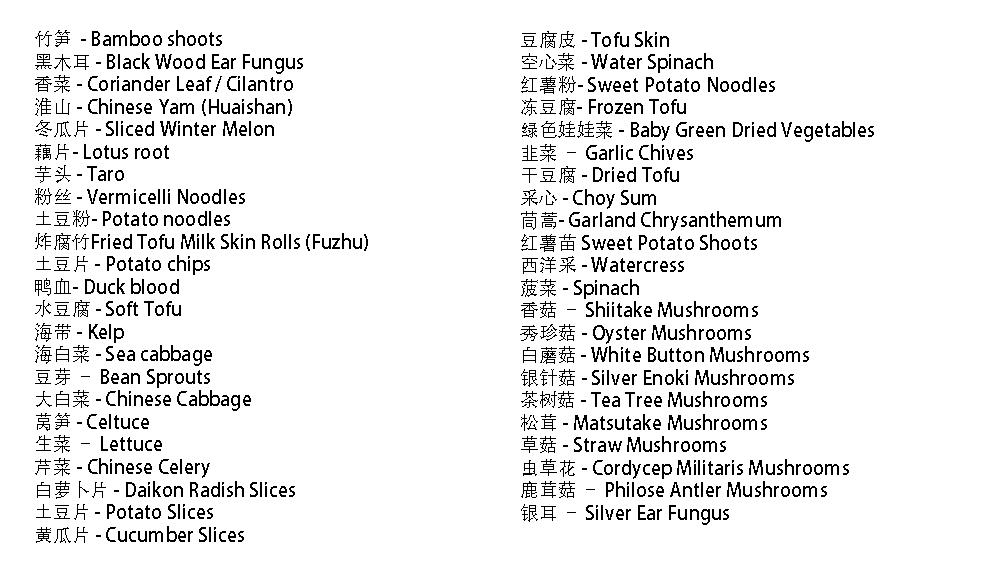
Not all hot pots come in a full broth; many are in a more dry format, such as this frog hotpot.
* It is disputed but many say that Sichuan hotpot originated in Chongqing. It is kind of irrelevant because at that time, Chongqing was part of Sichuan anyway. It was separated in 1987. The hotpot does, however also get called Chengdu hotpot after Sichuan's capital.


